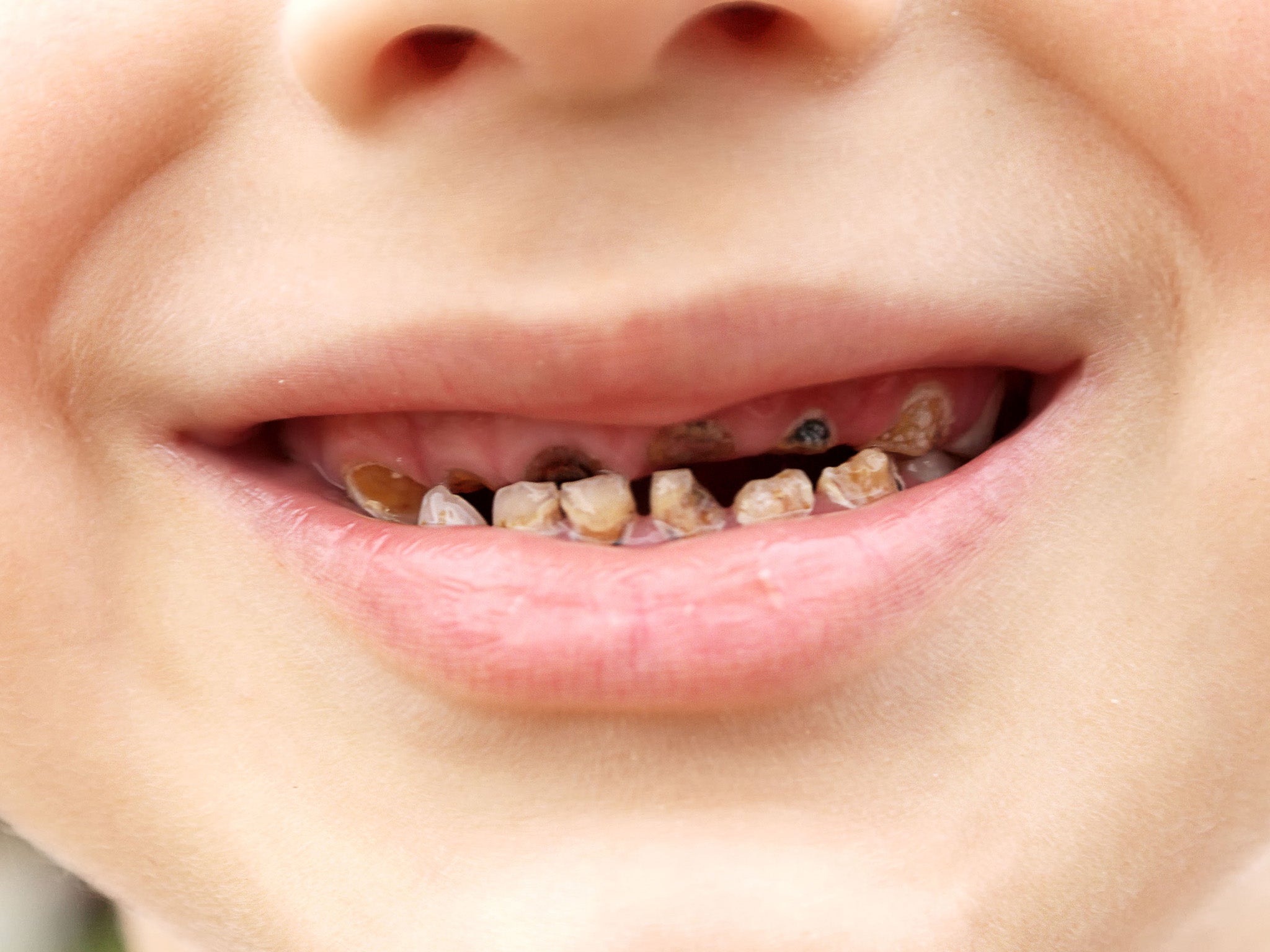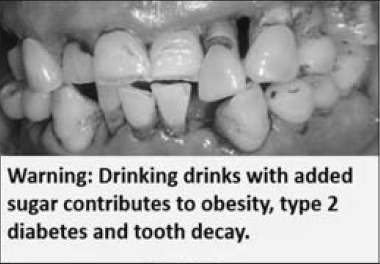Graphic cigarette-style health warnings also effective on sugary drinks, finds study
'Revolting, frightening and shocking' labels can help people choose healthy options

Your support helps us to tell the story
From reproductive rights to climate change to Big Tech, The Independent is on the ground when the story is developing. Whether it's investigating the financials of Elon Musk's pro-Trump PAC or producing our latest documentary, 'The A Word', which shines a light on the American women fighting for reproductive rights, we know how important it is to parse out the facts from the messaging.
At such a critical moment in US history, we need reporters on the ground. Your donation allows us to keep sending journalists to speak to both sides of the story.
The Independent is trusted by Americans across the entire political spectrum. And unlike many other quality news outlets, we choose not to lock Americans out of our reporting and analysis with paywalls. We believe quality journalism should be available to everyone, paid for by those who can afford it.
Your support makes all the difference.Graphic images of rotted teeth and health warnings on the side of sugary drinks could help deter young people opt for healthier options, a new study suggests.
Labels similar to those on tobacco products including health warnings about diabetes, obesity and dental problems as well as nutritional information, turned young adults off sugar-sweetened drinks, the research found.
The study makes a “compelling” case for labels on drinks, and other sugary products, to be implemented globally, said Professor Anna Peeters, lead author from Deakin University in Australia.
A sugar tax on soft drinks was recently introduced in the UK, but there have been growing calls for more action to tackle the obesity crisis.
While some companies including Irn-Bru have opted to reformulate to avoid the levy, others have been forced to hike prices.
“The question now is what kind of impact these labels could have on the obesity epidemic," Prof Peeters said. “While no single measure will reverse the obesity crisis given that the largest source of added sugars in our diet comes from sugar-sweetened drinks, there is a compelling case for the introduction of front-of-pack labels on sugary drinks worldwide.”
The research, which will be presented at the European Congress on Obesity in Vienna, Austria, examined responses from around 1,000 Australians aged 18 to 35.

They were divided into five groups and asked to choose from a selection of 15 drinks, including sweetened and unsweetened options.
The sugary drinks were either unlabelled, or included one of four labels: a graphic warning showing an image of crooked teeth, a text warning, information about the number of teaspoons of added sugar, or a health rating.
Participants were 36 per cent less likely to purchase sugary drinks that included a graphic warning compared to those without a label, and one per cent less likely to buy those with sugar information on the packaging, the research found.
They were 20 per cent more likely to choose healthier alternatives when Health Star Ratings were displayed on all drinks compared to the group without labels.
The system is currently used on food products in Australia and New Zealand.
“All the different label types have the potential to reduce the intended choice of sugary drinks among young adults,” Professor Peeters said. “It seems to me, in the comprehensive package of things we have to do to reduce sugary drink consumption, this is likely to be one useful mechanism.”
Many people find the graphic labels “revolting and frightening and shocking” but the effects are less easy to produce with text messaging, she added.
In the study the graphic and text warning labels both stated: “Warning: Drinking drinks with added sugar contributes to obesity, Type Two diabetes and tooth decay.”
Professor Peeters said: “Half the battle is shifting communities and the response that we got from this is that was really useful. So I think it’s a great leg-in, or foot-in-the-door, to shifting those community attitudes.”
Sugary soft drinks are a “low-hanging fruit” for policy-makers because of their lack of nutritional benefit, Professor Peeters said.
But she suggests the labelling system could be rolled out to other products including fast food in the future, if successfully implemented in sugary drinks.
Gavin Partington, director general at the British Soft Drinks Association, said he hoped the UK drinks industry’s efforts to reduce sugar “sets an example” for other markets, adding: “Experience in the UK suggests that action industry is taking – around reformulation, portion size and switching advertising spend to low or no calorie products – is having ample effect in changing consumer behaviour.
“In fact, sugar intake from soft drinks in the UK has fallen by almost 19% since 2013 – five times as much as other categories, according to latest Public Health England data.”
Additional reporting by PA
Join our commenting forum
Join thought-provoking conversations, follow other Independent readers and see their replies
Comments